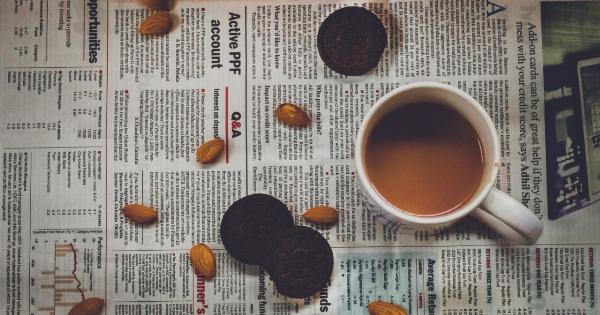When it comes to bone health, the number 60 holds significant importance. This is because bone mass reaches its peak at the age of 30 and gradually starts declining after that.
By the time an individual turns 60, the bones may become weak and fragile, increasing the risk of fractures and osteoporosis.
The Role of Calcium and Vitamin D
Calcium and vitamin D are two essential nutrients that play a vital role in maintaining and improving bone health. Calcium is the main mineral found in bones and teeth, providing strength and stability.
Vitamin D, on the other hand, helps the body absorb calcium from the diet.
The Importance of Milk
Milk is a great source of both calcium and vitamin D. Consuming an adequate amount of milk can contribute significantly to improving bone health.
It is recommended that adults consume around 1000 milligrams of calcium per day, and a glass of milk (around 250ml) contains approximately 300 milligrams of calcium. By drinking three glasses of milk a day, you can easily meet your daily calcium requirement!.
Other Calcium-Rich Foods
If you are not a fan of milk or are lactose intolerant, there are several other sources of calcium that you can incorporate into your diet. Some of these include:.
1. Yogurt
Yogurt is not only rich in calcium but also contains live cultures that promote gut health. One cup of yogurt can provide around 300 milligrams of calcium.
2. Cheese
Cheese is another delicious source of calcium. However, it is important to consume it in moderation as it can be high in saturated fat. One ounce of cheese can provide approximately 200-300 milligrams of calcium.
3. Leafy Greens
Leafy greens such as kale, spinach, and collard greens are excellent plant-based sources of calcium. They are also packed with other essential nutrients and fiber. One cup of cooked leafy greens can contain around 100-200 milligrams of calcium.
4. Tofu
Tofu, made from soybeans, is a versatile and nutritious source of calcium, especially for vegetarians and vegans. A 100-gram serving of tofu can provide approximately 350 milligrams of calcium.
5. Fortified Plant-Based Milk
If you follow a vegan or dairy-free diet, fortified plant-based milk alternatives such as soy milk, almond milk, or oat milk can be a good source of calcium.
Just make sure to check the label and choose varieties that are fortified with calcium and vitamin D.
The Role of Grains
In addition to milk and calcium-rich foods, incorporating certain grains into your daily diet can also contribute to better bone health. Grains like oats, brown rice, and barley are not only nutritious but also provide essential vitamins and minerals.
1. Oats
Oats are not only a great source of dietary fiber but also contain important minerals like magnesium and phosphorus. These minerals play a crucial role in maintaining bone health. Include a bowl of oatmeal in your breakfast to give your bones a boost.
2. Brown Rice
Brown rice is a whole grain that contains magnesium and phosphorus, along with other nutrients such as manganese and selenium. These minerals are necessary for the proper development and maintenance of strong bones.
3. Barley
Barley is another grain that is rich in important bone-friendly minerals like magnesium and phosphorus. It also contains antioxidants and dietary fiber, making it a nutritious addition to your meals.
4. Whole Wheat
Whole wheat products like bread, pasta, and couscous are rich in nutrients that are beneficial for bone health. These include magnesium, phosphorus, and zinc. Opt for whole wheat options instead of refined grains for maximum nutritional benefits.
Conclusion
Choosing to incorporate milk and calcium-rich foods, along with grains like oats, brown rice, barley, and whole wheat, can significantly contribute to improving bone health.
Consistently providing the body with the necessary nutrients, especially calcium and vitamin D, can help prevent bone loss and reduce the risk of osteoporosis and fractures. So, don’t forget to drink more milk and include these grains in your diet for stronger and healthier bones!.































